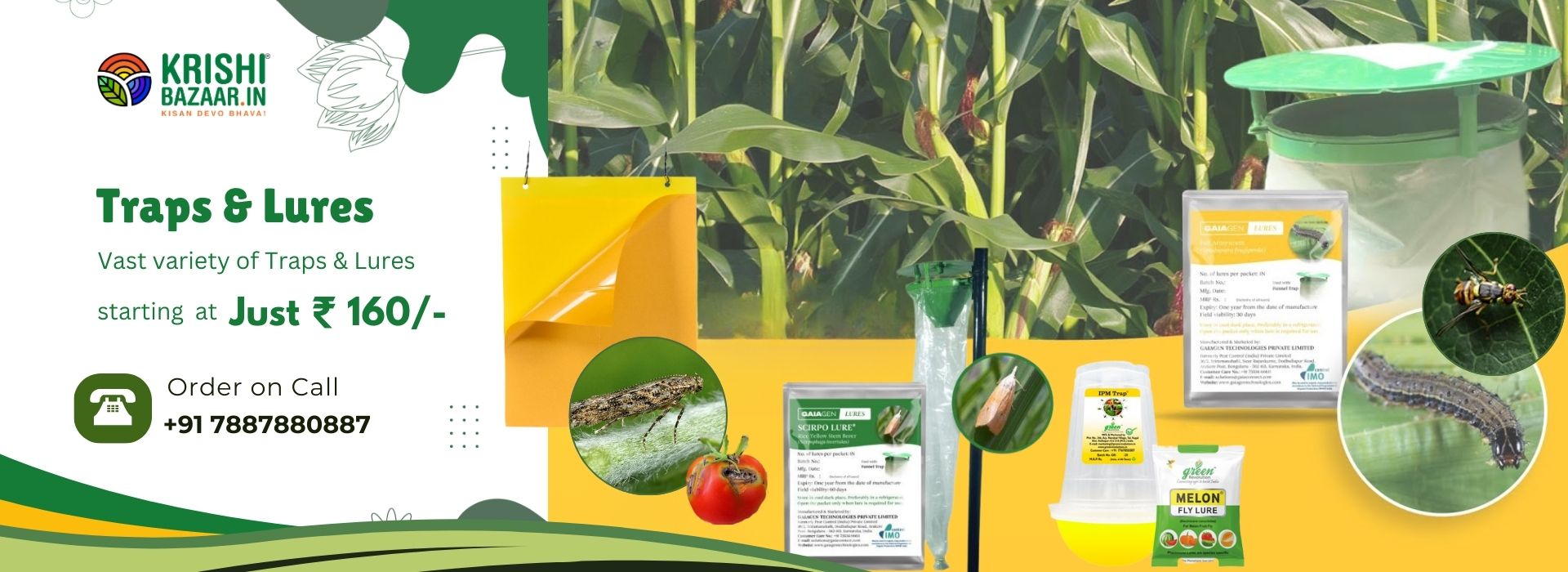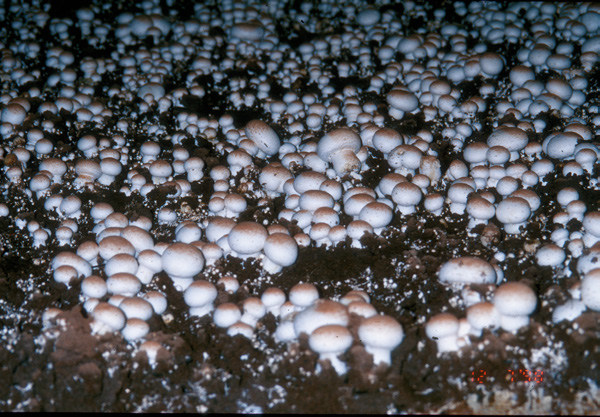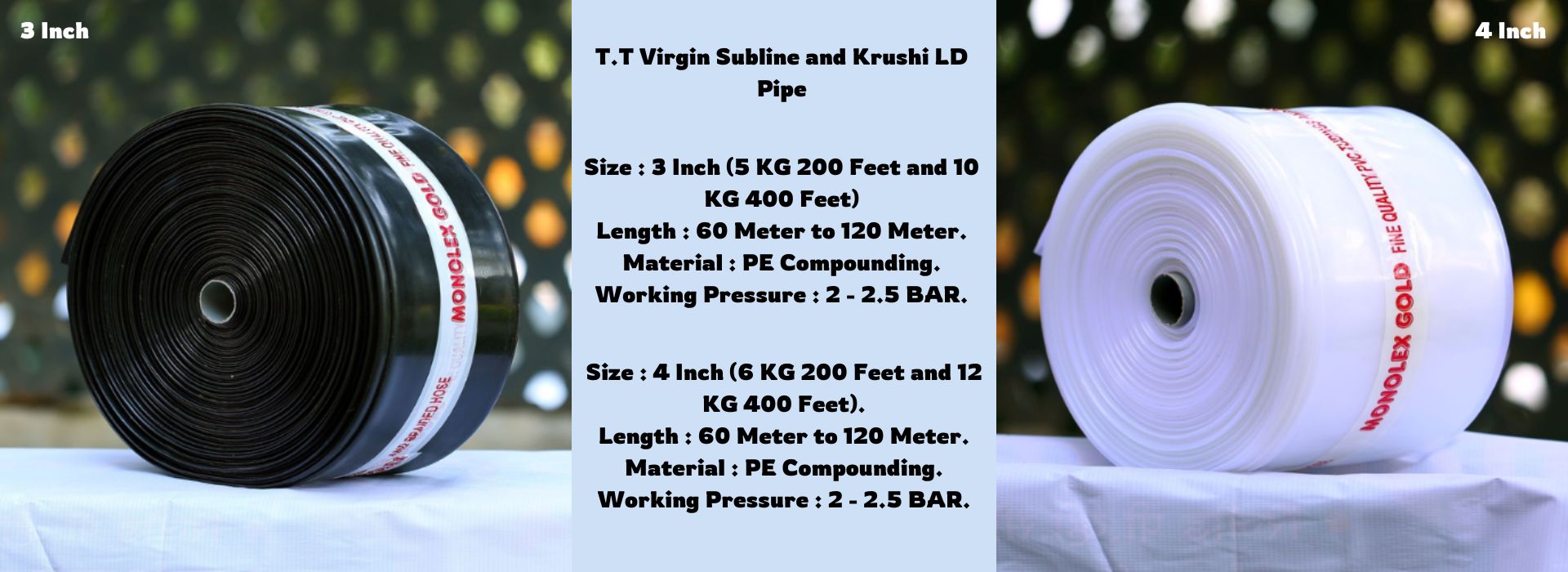The Ultimate Guide to Crop Safety: Unveiling the Best Traps and Lures for Pest Control
August 6, 2024The Ultimate Guide to Crop Safety:
Unveiling the Best Traps and Lures for Pest Control
Are pests wreaking havoc
on your crops? Look no further! In this comprehensive guide, we unveil the best
traps and lures for pest control, ensuring the safety and protection of your
valuable crops.
When it comes to crop
safety, using effective traps and lures is essential for a successful pest
control strategy. These tools not only target specific pests, but they also
minimize the need for harmful chemical pesticides, promoting a more
eco-friendly approach to agriculture.
With our expertise and
experience in the field, we have compiled the ultimate guide to help you combat
crop pests. Whether you're dealing with aphids, caterpillars, or rodents, our
guide provides in-depth information on the most effective traps and lures
available.
Say goodbye to the
frustrations of crop damage and hello to bountiful harvests. Join us as we
unlock the secrets to crop safety and reveal the best traps and lures for pest
control. Don't let pests eat away at your hard work - take control of your
crops today!
Common pests that affect crops and
their impact
Crop pests can wreak havoc
on your hard-earned yields, causing significant losses and jeopardizing your
livelihood. Among the most common culprits are aphids, caterpillars, and
rodents, each with their own unique methods of destruction.
Aphids, for instance, are
small sap-sucking insects that can quickly multiply and infest entire plants.
They not only deprive the plants of essential nutrients, but they also transmit
harmful viruses, leading to stunted growth and reduced yields. Caterpillars, on
the other hand, are voracious feeders that can devour leaves, stems, and even
fruits, leaving behind unsightly damage and compromising the overall health of
the crop.
Rodents, such as mice and
rats, pose a different kind of threat. They not only consume the crops
directly, but they also burrow through the soil, causing structural damage to
the plants and creating entry points for other pests and diseases. Additionally,
their droppings and urine can contaminate the produce, rendering it unfit for
consumption.
The impact of these pests
can be devastating, leading to significant financial losses for farmers and
growers. Effective pest control measures are crucial to safeguarding your crops
and ensuring a bountiful harvest. Understanding the different methods of pest
control is the first step in gaining control over these troublesome invaders.
Understanding the different methods
of pest control
When it comes to
protecting your crops from pests, there are two main approaches: chemical pest
control and organic pest control. Each method has its own advantages and
disadvantages, and the choice ultimately depends on your personal preferences,
the specific needs of your crop, and the environmental considerations.
Chemical pest control,
often referred to as conventional pest control, involves the use of synthetic
pesticides and insecticides to target and eliminate pests. These chemical
solutions can be highly effective in quickly reducing pest populations and preventing
further damage to your crops. However, the overuse or misuse of these chemicals
can have detrimental effects on the environment, human health, and the overall
ecosystem.
On the other hand, organic pest control focuses on more natural and eco-friendly methods of pest
management. This approach emphasizes the use of naturally-derived substances,
such as plant-based oils, pheromones, and beneficial insects, to disrupt the life
cycle of pests and discourage their presence in the crop field. While organic
pest control may take more time and effort to implement, it offers a more
sustainable and environmentally-conscious solution to safeguarding your crops.
Ultimately, the choice
between chemical and organic pest control will depend on your specific needs,
goals, and personal values. By understanding the pros and cons of each method,
you can make an informed decision that aligns with your crop safety priorities
and your commitment to responsible agricultural practices.
Chemical pest control: Pros and cons
Chemical pest control,
also known as conventional pest control, has been a widely adopted approach in
the agricultural industry for decades. This method involves the use of
synthetic pesticides and insecticides to target and eliminate pests that
threaten crop yields. While chemical pest control can be highly effective in
the short term, it is essential to consider the potential drawbacks and
long-term implications.
One of the primary
advantages of chemical pest control is its immediate and often dramatic impact
on pest populations. Synthetic pesticides and insecticides are designed to
disrupt the biological processes of pests, leading to their rapid demise. This
can provide a quick solution to urgent pest infestations, allowing farmers and
growers to protect their crops and maintain productivity.
However, the overuse or
improper application of these chemical solutions can have severe consequences.
Pesticides and insecticides can contaminate the soil, water sources, and air,
posing a threat to the local ecosystem and the health of nearby communities.
Additionally, repeated exposure to these chemicals can lead to the development
of pest resistance, rendering the products less effective over time and
necessitating the use of increasingly potent and potentially more harmful
substances.
Furthermore, the residues
from chemical pest control can linger on the crops, potentially making them
unsafe for human consumption. This can be a significant concern for consumers
who prioritize food safety and seek out organic or minimally processed produce.
The potential health risks associated with the ingestion of pesticide-laden
crops have led to a growing demand for alternative, more sustainable pest
control methods.
While chemical pest
control can provide immediate relief, it is crucial to weigh the pros and cons
carefully and consider the long-term implications on the environment, human
health, and the overall sustainability of your agricultural practices. Exploring
organic pest control methods may offer a more eco-friendly and responsible
approach to safeguarding your crops.
Organic pest control: Benefits and
strategies
As concerns over the
environmental and health impacts of chemical pest control continue to grow,
organic pest control has emerged as a more sustainable and eco-friendlier
alternative. This approach focuses on the use of naturally-derived substances
and strategies to manage and mitigate pest infestations, without the reliance
on synthetic pesticides and insecticides.
One of the primary
benefits of organic pest control is its emphasis on promoting a healthy and
balanced ecosystem. By utilizing natural pest deterrents, such as plant-based
oils, pheromones, and beneficial insects, organic pest control aims to disrupt
the life cycle of pests and discourage their presence in the crop field. This
not only protects the crops but also supports the overall biodiversity and
ecological well-being of the surrounding environment.
Another advantage of
organic pest control is its long-term effectiveness. While chemical pest
control may provide a quick fix, organic methods often require a more proactive
and comprehensive approach. This includes implementing cultural practices, such
as crop rotation, companion planting, and the introduction of natural
predators, to create an environment that is less hospitable to pests. By
addressing the underlying causes of pest infestations, organic pest control can
lead to more lasting and sustainable solutions.
Furthermore, organic pest
control strategies often have a lower impact on human health. The use of
natural, non-toxic substances eliminates the risk of chemical residues on the
crops, ensuring that the produce is safe for consumption. This aligns with the
growing demand for healthier, more environmentally-conscious food options,
making organic pest control an attractive choice for health-conscious consumers
and environmentally-minded farmers alike.
While organic pest control
may require more time and effort to implement, the long-term benefits of this
approach make it a worthwhile investment. By embracing organic strategies, you
can not only safeguard your crops but also contribute to the overall sustainability
of your agricultural practices and the well-being of the surrounding ecosystem.
Traps and lures for pest control : How
they work and their effectiveness
In the quest for effective
and eco-friendly pest control, traps and lures have emerged as powerful tools
in the arsenal of modern agriculture. These specialized devices are designed to
target specific pests, offering a more targeted and sustainable approach to
managing infestations.
The underlying principle
behind traps and lures is to leverage the natural behaviors and preferences of
pests, luring them into a controlled environment where they can be effectively
captured or eliminated. Traps, for instance, can be baited with attractive
scents or pheromones, enticing the pests to enter and become trapped,
preventing them from reaching and damaging the crops.
Lures, on the other hand,
work by emitting specific scents or pheromones that mimic the natural signals
used by pests to communicate and locate mates or food sources. By strategically
placing these lures in the crop field, you can disrupt the pests' mating and
feeding patterns, effectively reducing their population and minimizing the
threat to your crops.
The effectiveness of traps
and lures lies in their ability to target specific pests, reducing the need for
broad-spectrum pesticides and minimizing the impact on non-target organisms and
the surrounding ecosystem. Additionally, these tools can be used in conjunction
with other organic pest control methods, such as the introduction of beneficial
insects or the implementation of cultural practices, to create a comprehensive
and sustainable pest management strategy.
However, the success of
traps and lures ultimately depends on proper placement, monitoring, and
maintenance. Understanding the unique behaviors and preferences of the pests
affecting your crops is crucial in selecting the right traps and lures, as well
as ensuring that they are deployed in the most strategic locations. Regularly
checking and replacing these devices can also help maintain their effectiveness
over time.
Best traps and lures for specific
pests
When it comes to
protecting your crops from pests, not all traps and lures are created equal.
Each type of pest has its own unique behavioral patterns and preferences,
requiring a tailored approach to ensure effective control. In this section,
we'll explore the best traps and lures for some of the most common crop pests.
For aphids, which are
notorious for their rapid reproduction and ability to spread plant diseases,
pheromone-based traps have proven to be highly effective. These traps emit
specific scents that mimic the sex pheromones of aphids, luring them in and
trapping them before they can infest your crops. Additionally, yellow sticky
traps can be an effective way to monitor and capture aphid populations, as
these insects are naturally attracted to the color yellow.
Caterpillars, on the other
hand, can be effectively targeted with pheromone-based lures that disrupt their
mating patterns. By placing these lures in strategic locations throughout the
crop field, you can prevent the caterpillars from laying their eggs and
reproducing, ultimately reducing the overall population and minimizing the
damage to your plants.
For rodent pests, such as
mice and rats, live traps are a humane and effective option. These traps are
designed to capture the rodents without causing harm, allowing you to then
release them in a remote location away from your crop field. Bait-based traps,
which use food as an attractant, can also be effective in reducing rodent
populations, but it's important to ensure that the bait is not accessible to
non-target animals or children.
Regardless of the specific
pest you're dealing with, it's essential to research and select the most
appropriate traps and lures for your crop and the local environment. Consulting
with pest control experts or agricultural extension services can provide valuable
insights and guidance in choosing the right tools for your unique situation.
Setting up traps and lures in your
crop field
Effectively implementing
traps and lures for pest control requires a strategic approach to ensure
optimal placement and deployment. The success of your pest management efforts
largely depends on how well you integrate these tools into your crop field and
monitor their performance over time.
When setting up traps and
lures, it's crucial to consider the specific pest species, their behavior
patterns, and the layout of your crop field. Placement is key - traps and lures
should be positioned in areas where pests are most likely to encounter them,
such as along the perimeter of the field, near known entry points, or in areas
with high pest activity.
For traps, it's important
to ensure that they are properly baited and maintained to remain attractive to
the target pests. Regularly checking and replenishing the bait, as well as
removing any captured pests, can help maximize the effectiveness of these devices.
Lures, on the other hand, should be placed at the appropriate height and in a
manner that allows for optimal dispersal of the pheromones or scents, ensuring
that they reach the intended pests.
In addition to proper
placement, it's essential to monitor the performance of your traps and lures
over time. Regularly inspecting the devices, recording the number and types of
pests captured or deterred, and adjusting the placement or bait as needed can
help you fine-tune your pest control strategy and ensure its ongoing
effectiveness.
By carefully planning and
implementing your trap and lure setup, you can create a comprehensive and
targeted pest control system that complements your overall crop management
practices, ultimately protecting your valuable crops and maximizing your yields.
Monitoring and evaluating the
effectiveness of traps and lures
Effective pest control is
an ongoing process that requires continuous monitoring and evaluation to ensure
the long-term success of your strategies. When it comes to the use of traps and
lures, regularly assessing their performance is crucial to making informed
decisions and making adjustments as needed.
One of the key aspects of
monitoring the effectiveness of traps and lures is record-keeping. Maintain
detailed logs of the number and types of pests captured or deterred, as well as
the placement and condition of the devices. This data can provide valuable
insights into the patterns and trends of pest activity, allowing you to
identify problem areas and make targeted interventions.
In addition to
quantitative data, visual inspections of your crop field can also provide
valuable information. Look for signs of pest damage, such as wilting leaves,
chewed stems, or the presence of egg masses or larvae. These visual cues can
help you assess the overall impact of your pest control efforts and make
adjustments to your trap and lure placement or deployment as needed.
It's also important to
regularly check the condition of your traps and lures, ensuring that they are
functioning properly and maintaining their attractiveness to the target pests.
Replace worn or damaged devices, replenish bait or pheromone sources, and adjust
the placement as necessary to optimize their effectiveness.
By closely monitoring and
evaluating the performance of your traps and lures, you can make data-driven
decisions to refine your pest control strategies, address emerging threats, and
ensure the long-term protection and viability of your valuable crops.
Conclusion: Implementing a
comprehensive pest control plan for crop safety
In the quest for crop
safety and protection, a comprehensive pest control plan that integrates the
strategic use of traps and lures is essential. By leveraging the power of these
targeted tools, you can effectively manage and mitigate the impact of common
crop pests, while minimizing the reliance on harmful chemical pesticides and
promoting a more sustainable approach to agriculture.
Throughout this guide, we
have explored the various pests that can threaten your crops, the different
methods of pest control, and the specific traps and lures that are most
effective for each pest type. By understanding the unique behaviors and
preferences of these pests, you can tailor your pest control strategies to
address the unique challenges of your crop field and create a tailored solution
that meets your specific needs.
Remember, the
implementation of traps and lures is just one component of a comprehensive pest
control plan. Incorporating other organic pest control methods, such as
cultural practices, the introduction of beneficial insects, and the continuous
monitoring and evaluation of your strategies, can further enhance the
effectiveness of your efforts and ensure the long-term health and viability of
your crops.
As you embark on your
journey to safeguard your crops, embrace the power of traps and lures as part
of a holistic approach to pest management. By doing so, you'll not only protect
your valuable yields but also contribute to the overall sustainability of your
agricultural practices and the well-being of the surrounding environment.
Unlock the secrets to crop safety and enjoy the bountiful harvests that come
with effective pest control.
At krishibazaar.in,
you can find and buy various agricultural products. For agricultural guidance
on selecting the most suitable products for your crops, please contact or
WhatsApp at +917887880887.






Guest reviews
No reviews found for this Blog